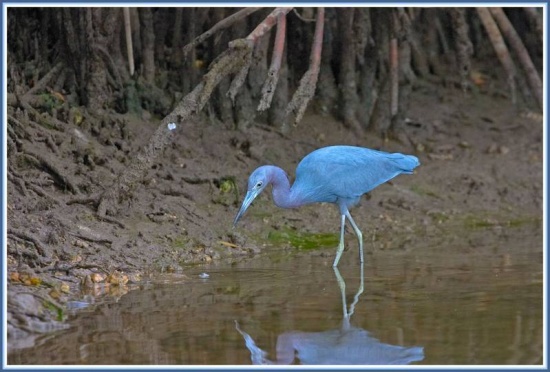- Egretta caerulea
Photo taken: Broward County Park, South Florida, USA.
Identification
Little Blue Heron Egretta caerulea The Little Blue Heron, Egretta caerulea, is a small heron. This species is about 60 cm long, with a 102 cm wingspan, and weighs 325 g. It is a medium-large, long-legged, heron with a long pointed blue or greyish bill with a black tip.
Breeding adult birds have blue-grey plumage except for the head and neck, which are purplish and have long blue filamentous plumes. The legs and feet are dark blue. Sexes are similar back.
Non-breeding adults have dark blue head and neck plumage and paler legs. Young birds are all white except for dark wing tips and have yellowish legs. They gradually acquire blue plumage as they mature.
Distribution
Breeds coastally in North America from southern New England to Florida and the Gulf Coast and in the lower Mississippi from southern Illinois southwards. Occurs throughout the West Indies and in Mexico breeds on both coasts and south to Panama. In South America ranges south to central Peru in the west and Uruguay in the east. Northern birds migrate south to winter in Florida, the West Indies and South America. It is a resident breeder in most of its range, but some northern breeders migrate to the southeastern USA or beyond in winter. There is post-breeding dispersal to well north of the nesting range, as far as the border between the US and Canada.
Taxonomy
Habitat
Swamps, flooded grasslands and lagoons, also coastal habitats in some areas.
Behaviour
It nests in colonies, often with other herons, usually on platforms of sticks in trees or shrubs. 3-7 light blue eggs are laid.
The Little Blue Heron stalks its prey methodically in shallow water, often running as it does so. It eats fish, crustaceans and insects.




